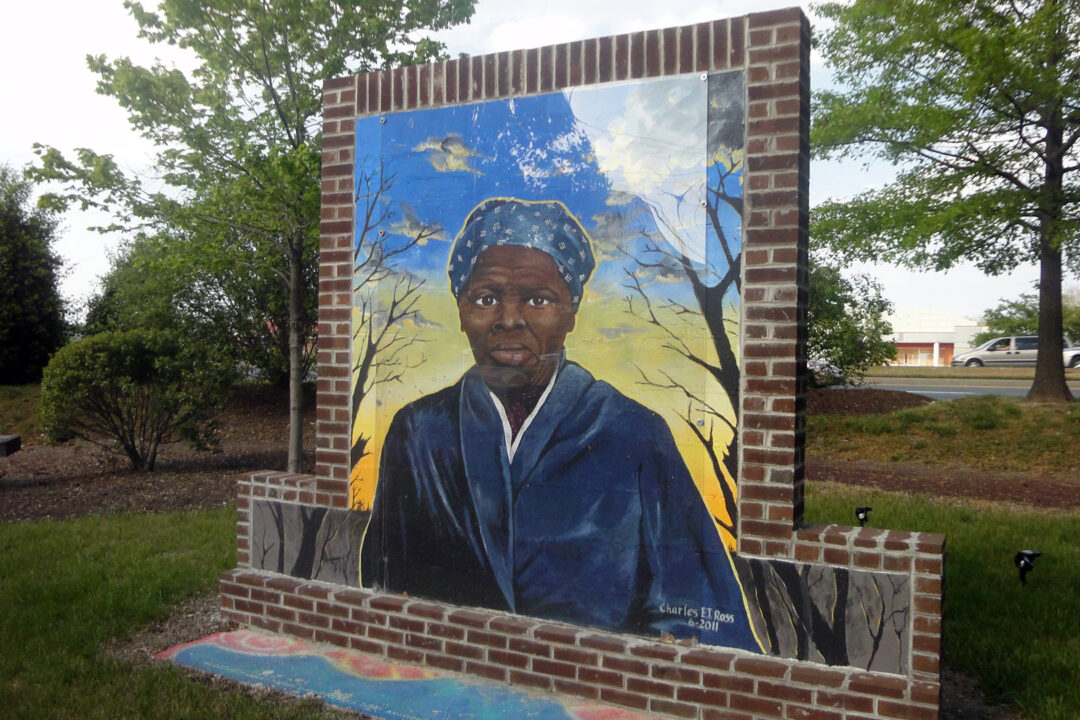Born enslaved in Maryland around 1822, Harriet Tubman eventually escaped and led dozens of others to freedom utilizing the Underground Railroad. The network of abolitionists and safe houses directed enslaved people from the South to free states in the North or all the way through to Canada. Tubman, who also worked as a cook, nurse, scout, and spy for the Union Army, lived into her early 90s. She died in Auburn, New York, on March 10, 1913.
The self-guided, 125-mile scenic Harriet Tubman Underground Railroad Scenic Byway in Maryland stretches from Cambridge to Goldsboro on country roads through hip towns off state highways. The byway’s 36 stops have close ties to Tubman, the Underground Railroad, and other key moments in the abolitionist movement. Many of the sites feature outdoor markers or interpretive signage, and others offer guided tours, interpretive artwork, and educational opportunities. Here are five must-see stops to “experience the weight of freedom” along the Harriet Tubman Byway.

1. Harriet Tubman Museum and Educational Center
Harriet Tubman was born in the early 1800s in Maryland’s Dorchester County. Open since the 1980s, the Harriet Tubman Museum and Educational Center, located in downtown Cambridge, has been dedicated to preserving Tubman’s legacy. The small museum is staffed by volunteers, and features educational videos, exhibits, and a large mural detailing the extraordinary life and contributions of one of Dorchester County’s most famous hometown heroes.

2. Bucktown Village Store
In 1835, Tubman, who was hired out to a nearby farmer, went to a store in Bucktown, Maryland. When she was ordered to help tie up another enslaved man, she resisted and was struck in the head with a 2-pound weight. The blow cracked her skull, resulting in an injury that would plague her for the rest of her life. A rare surviving relic from Tubman’s era, the Bucktown Village Store provides guided tours and encourages visitors to interact with the space and “experience the weight of freedom.”

3. Stanley Institute Museum
The former Rock School, renamed in honor of the Reverend Ezekiel Stanley as the Stanley Institute Museum, is located in Cambridge, Maryland. This “early example of a post-Civil War African-American school built and run independently by the local Black community” was used until the 1960s. The one-room schoolhouse, one of the oldest established to serve the Black community after the Civil War, was moved to Cambridge in 1867 and is now listed on the National Register of Historic Places.

4. Dorchester County Courthouse And Jail
The Dorchester County Courthouse has a dark and harrowing history, featuring slave auctions and trials of free Black people as well as those assisting the Underground Railroad. In 1850, Tubman helped engineer the escape of her niece, Kessiah Bowley, and her two children. Kessiah’s husband John, who was a free Black man, entered the highest bid for his wife and children, but once it was time to collect payment, the Bowley family was long gone. They escaped via boat to Baltimore, where Tubman met them and brought them to freedom in Philadelphia.

5. Harriet Tubman Underground Railroad National Historical Park
The 10,000-square-foot visitor center at Harriet Tubman Underground Railroad National Historical Park features exhibits, a research library, a museum store, a riveting documentary about Tubman’s life, and more. Located in the heart of Dorchester County, the park sits on 17 acres that preserve the landscape where Tubman grew up, and where she led herself and so many others to freedom.








